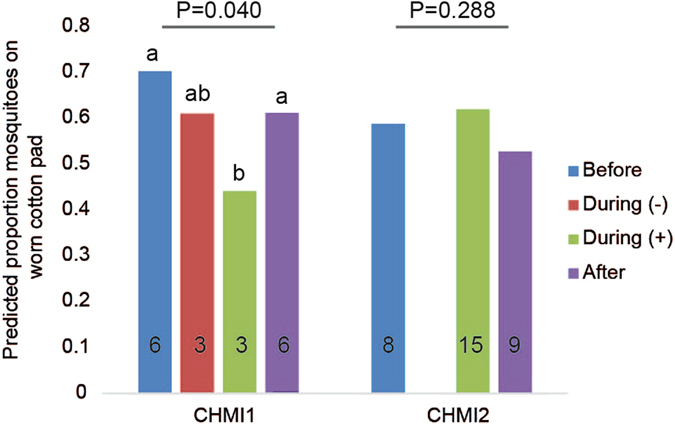Figure 3.

Choice of Anopheles coluzzii for cotton pads worn by participants in two Controlled Human Malaria Infection studies. Proportions of mosquitoes trapped in the two traps of the olfactometer are plotted at three sampling time points relative to P. falciparum infection: Before, During and After, with parasitological status by qPCR during infection indicated by (−) for qPCR-negatives and (+) for qPCR-positives. Control traps contained a cotton pad with NH3. Back-transformed predicted mean proportions of mosquitoes are plotted, from the GLMMs including temporal P. falciparum infection as a fixed effect term and participant as a random effect term. Numbers in bars represent the number of cotton pad samples tested in each group (N = 6 individuals in CHMI1, N = 9 individuals in CHMI2). P-values are given for the effect of temporal P. falciparum infection within each CHMI study, with significant pairwise differences within CHMI1 indicated by different letters above bars, tested at the logistic scale (P < 0.05). For predicted means (logistic transformation) with standard errors, see Fig. S6, and for pairwise t-probabilities of CHMI1, see Table S3.
